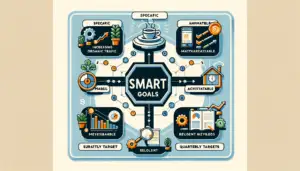Unleash the full potential of your SEO efforts with an action-oriented approach, transforming your planning into tangible results that elevate your online presence.
Introduction

At Data Dailey, a leading SEO company, we understand this unique challenge that SEO creators face.
The journey from drafting an SEO strategy to seeing it materialize in tangible results is often fraught with hurdles and uncertainties.
Understanding the SEO Creator’s Dilemma
As SEO professionals, our days are filled with keyword research, content planning, and analyzing the ever-changing algorithms of search engines…
This meticulous planning is crucial, but it becomes a stumbling block when it hinders action.
Many SEO experts spend excessive time in the planning phase, aiming for perfection, which ultimately delays the actual content creation and implementation.
The key to overcoming this challenge lies in finding a balance.
It’s about creating a synergy between strategic foresight and prompt action.
Our approach at Data Dailey emphasizes actionable advice:
Start each project with a clear, focused goal.
This goal should be specific, measurable, achievable, relevant, and time-bound (SMART).
A well-defined goal not only provides a clear direction but also streamlines the decision-making process, enabling quicker transition from planning to action (we’ll dive deeper into this in just a moment).
From Planning to Publishing
Transitioning from strategic thinking to productive execution is akin to shifting gears in a vehicle.
It requires a change in mindset, from a planner to a doer.
As the renowned SEO expert, Alex Turner, once said,
“The perfect plan is useless without the action to turn it into reality. SEO is about adapting and implementing, not just theorizing.”
This statement encapsulates the essence of what makes an SEO strategy successful.
It’s not just about crafting an impeccable plan; it’s about executing it with precision and adaptability.
In the following sections, we will delve into practical strategies and tips that will help SEO professionals at any level – from beginners to veterans – to maximize their productivity by focusing on action-oriented content creation.
Stay tuned as we navigate through this comprehensive guide, ensuring you are equipped with the tools and knowledge to transform your SEO plans into impactful results.
Identifying and Overcoming Analysis Paralysis in SEO

It occurs when we become so entangled in the minutiae of our strategies and data that we lose sight of the bigger picture – effective execution.
Recognizing the Signs of Overthinking in SEO Strategies
The first step to overcoming analysis paralysis is recognizing its signs.
These include;
- excessive data analysis
- hesitation to implement strategies due to fear of imperfection
- constantly changing tactics without giving them adequate time to yield results

This tool helps you visually map out the importance and urgency of each task, enabling you to focus on what truly matters.
For instance, if link building is crucial for your current strategy but you’re spending disproportionate time on keyword analysis, the matrix will highlight this discrepancy.
Creating a decision matrix to prioritize SEO tasks is a great way to visually organize and manage your SEO strategy. Here’s how you can design one:
Set Up the Matrix: Draw a two-dimensional grid. Label one axis as “Importance” and the other as “Urgency”. Divide each axis into three sections: Low, Medium, High.
List Your SEO Tasks: Identify all the SEO tasks you need to manage. Common tasks include link building, keyword analysis, content creation, on-page SEO, technical SEO, competitor analysis, and monitoring metrics.
Evaluate Each Task:
- Importance: Assess how each task impacts your overall SEO goals. Tasks that directly influence your site’s ranking and visibility should be considered high importance.
- Urgency: Determine how time-sensitive each task is. For example, fixing technical SEO issues might be more urgent compared to long-term strategies like content creation.
Place Tasks on the Matrix: Position each task on the grid based on its assessed importance and urgency. For instance, if link building is crucial (high importance) and needs immediate attention (high urgency), place it in the top right corner of the matrix.
Analyze and Prioritize:
- Tasks in the High Importance/High Urgency quadrant should be your top priority.
- Tasks in the Low Importance/Low Urgency quadrant can be scheduled for later or delegated.
Adjust Your Strategy: Use the insights from the matrix to realign your efforts. If you find you’re spending too much time on low-priority tasks, adjust your strategy to focus on more critical areas.
Remember, the decision matrix is a dynamic tool. Regularly update it to reflect changes in your SEO strategy and market dynamics.
Real-World Example:
Consider the case of ‘GreenGrowth,’ a sustainable living blog. Initially, they spent weeks fine-tuning their keyword strategy but saw minimal traffic growth.
When they shifted focus to producing quality content and applied a simplified keyword approach, their site traffic increased by 50% within three months.
This change was a direct result of prioritizing action over excessive planning.
Which brings us to the next part…
Balancing Keyword Research with Content Production

While the former informs your strategy, the latter drives actual traffic and engagement.
Imagine a graph where the X-axis represents time spent on keyword research and the Y-axis represents content production.
The ideal scenario is finding a balance – not too skewed towards either.
This balance ensures that your strategy is both informed and actionable.
Case Studies: SEO Experts Who Shifted from Theory to Action

Take the example of Sarah Johnson, an SEO consultant. Initially, her approach was heavily weighted towards theoretical planning.
After several underperforming campaigns, she adopted a more practical approach.
She started implementing strategies more rapidly, using real-time data to make adjustments. This shift resulted in a 35% increase in organic traffic for her clients, proving the efficacy of a balanced, action-oriented approach.
In these examples, the common thread is the shift from overthinking to action. For SEO professionals, this balance is not just a recommendation; it’s a necessity for achieving real, tangible results in the digital landscape.
Which brings us to the next part:
Setting Goals and Deadlines in SEO Content Creation
Successful SEO strategies are not just about doing the right things but also doing them within the right timeframe.
Setting clear goals and deadlines is pivotal for effective SEO content creation.
Establishing Achievable SEO Targets

The key here is to set SMART goals –
- Specific
- Measurable
- Achievable
- Relevant
- Time-bound.
Each SEO campaign should have clear objectives that adhere to these criteria.
Imagine an infographic that breaks down the SMART goal framework in the context of SEO.
For instance, a specific goal could be
- Specific – increasing organic traffic by 20%
- Measurable – measurable by analytics tool
- Achievable – achievable through optimized content and backlink
- Relevant – relevant to the overall business objectives
- Time-bound – within a quarter
Implementing SMART goals is crucial in SEO as it provides a clear, measurable, and achievable roadmap, ensuring that every strategy is tailored for success and aligned with specific business objectives.
The Importance of Consistent Content Scheduling
Regular content creation and updates are crucial in SEO for maintaining and improving search engine rankings.
As renowned SEO expert Linda Harper says,
“Consistency in content creation and updates is not just beneficial but essential in SEO. It signals to search engines that your website is a relevant, up-to-date resource for users.”
This regularity in content production ensures that your website remains fresh, relevant, and appealing to both search engines and your audience. It also provides opportunities to incorporate new keywords and respond to the latest trends in your industry.
Embracing Flexibility
While it’s important to have a structured approach to SEO, flexibility is equally crucial.
The digital marketing landscape is constantly evolving, and your SEO strategy should be adaptable to these changes.
For example, let’s consider ‘TechTrends,’ a technology news website.
They had a detailed SEO strategy focused on emerging tech trends for the year.
However, when a major tech innovation was announced unexpectedly, they quickly adapted their content plan to include this new topic, capitalizing on the surge in search interest.
This agility not only boosted their traffic significantly but also positioned them as a timely and authoritative source in their niche.
In conclusion:
- setting SMART goals,
- maintaining a consistent content schedule,
- being adaptable to market changes
All arere foundational elements for successful SEO content creation.
These practices ensure that your SEO efforts are both focused and flexible, ready to meet the dynamic demands of the digital landscape.
Effective Time Management for SEO Professionals
Mastering time management is crucial for SEO professionals who juggle multiple tasks each day.
By effectively managing time, you can ensure that your SEO efforts yield the maximum impact.
Prioritizing SEO Tasks for Maximum Impact
One effective way to manage time is by prioritizing tasks based on their importance and urgency.
The Eisenhower Box, a simple yet powerful tool, can be instrumental in this process. It divides tasks into four categories: urgent and important, important but not urgent, urgent but not important, and neither urgent nor important.
Now you may be asking, what is the difference between “decision matrix” introduced earlier and “Eisenhower Matrix”?
The “Decision Matrix” and the “Eisenhower Matrix” are both tools used for prioritizing and decision-making, but they have different approaches and applications:
Decision Matrix:
- Purpose: A decision matrix is used to evaluate and prioritize a list of options or tasks based on a set of criteria. It’s often used in business and personal settings for a variety of decision-making scenarios.
- Structure: It typically consists of a table with one axis listing the options/tasks and another axis listing the criteria. Each option is scored against each criterion, and the scores are used to determine the overall ranking or priority of the options.
- Flexibility: The criteria can be customized according to the specific needs of the decision-making scenario. It can include factors like cost, time, impact, resource requirement, etc.
- Usage: It’s often used in situations where a more nuanced evaluation of multiple factors is necessary to make a decision.
Eisenhower Matrix:
- Purpose: The Eisenhower Matrix, also known as the Urgent-Important Matrix, is a time management tool used to prioritize tasks based on their urgency and importance.
- Structure: It’s a simple 2×2 grid with four quadrants: Urgent and Important, Important but Not Urgent, Urgent but Not Important, and Neither Urgent nor Important.
- Criteria: The only criteria used are ‘Urgency’ and ‘Importance’. Tasks are categorized based on these two dimensions.
- Usage: It’s mainly used for task management, helping individuals and teams focus on tasks that are most critical and align with long-term goals or values. It’s particularly useful for distinguishing between tasks that require immediate attention and those that contribute to long-term objectives.
While both matrices are used for prioritizing, the decision matrix is more versatile and can be tailored to a wide range of decision-making situations with multiple criteria, whereas the Eisenhower Matrix is specifically focused on prioritizing tasks based on urgency and importance.
Use the Eisenhower Box to categorize SEO tasks.
For instance, resolving site errors might be urgent and important, while reading up on the latest SEO trends might be important but not urgent. This method helps in focusing on tasks that significantly impact your SEO performance while not getting bogged down by less critical activities.
Utilizing SEO Tools for Efficient Workflow
In the SEO world, tools are your best allies in enhancing productivity. Here are some essential tools every SEO professional should consider:
- Google Analytics: The go-to tool for monitoring website traffic and user behavior. It’s invaluable for understanding the impact of your SEO efforts.
- SEMrush: A comprehensive tool for keyword research, competitor analysis, and site audits. It’s particularly useful for uncovering opportunities and gaps in your SEO strategy.
- Ahrefs: Renowned for its backlink analysis capabilities, Ahrefs is essential for understanding and building your site’s backlink profile.
- Moz Pro: Offers a suite of tools including site audits, keyword research, and rank tracking. Its user-friendly interface makes it a favorite among SEO beginners and experts alike.
- Yoast SEO: A must-have plugin for WordPress users, it guides you through optimizing your content and technical SEO factors.
Balancing On-Page and Off-Page SEO Efforts

Consider a chart that illustrates a balanced SEO strategy. One half of the chart could focus on on-page SEO elements like content quality, keyword optimization, and site structure. The other half could emphasize off-page aspects like link building, social media engagement, and influencer outreach. The intersection of these elements is where you achieve optimal SEO efficiency.
In conclusion, effective time management for SEO professionals involves prioritizing tasks with tools like the Eisenhower Box, utilizing a range of SEO tools for various aspects of your strategy, and maintaining a balanced focus between on-page and off-page SEO efforts.
By mastering these elements, you can ensure that your time is spent in the most productive way possible, leading to better SEO results.
Leveraging Tools and Technology in SEO

Key SEO Tools for Enhanced Productivity
A detailed comparison of some top SEO tools can help in understanding which ones best suit your needs:
- Google Analytics vs. SEMrush: While Google Analytics excels in providing detailed data on website traffic and user behavior, SEMrush offers more comprehensive features for keyword research and competitor analysis. Google Analytics is ideal for tracking performance, whereas SEMrush is a powerhouse for strategizing.
- Ahrefs vs. Moz Pro: Ahrefs is renowned for its superior backlink analysis capabilities, making it essential for link-building strategies. Moz Pro, on the other hand, offers a more user-friendly interface and diverse functionalities like site audits and rank tracking, making it suitable for both beginners and seasoned SEO professionals.
- Yoast SEO vs. SEMrush’s SEO Writing Assistant: For WordPress users, Yoast SEO provides an excellent guide for optimizing on-page SEO factors. In contrast, SEMrush’s SEO Writing Assistant gives real-time suggestions to improve content’s SEO potential, useful for content optimization across various platforms.
Automating Routine SEO Tasks
Automation in SEO can be a significant time-saver. For instance, tools like SEMrush and Moz can automate keyword tracking, notifying you of ranking changes without manual monitoring.
Automation in link-building can be seen in tools like BuzzStream, which helps in identifying potential link-building opportunities and automating outreach processes.
For Example, a digital marketing agency automated their client’s keyword tracking and backlink analysis. This shift freed up approximately 10 hours per week that were previously spent on manual tracking, allowing the team to focus more on strategy and content creation.
Integrating SEO with Content Management Systems
Integrating SEO tools with your content management system (CMS) can streamline your workflow significantly. Here’s a step-by-step guide on integration:
Choose Compatible Tools: Ensure the SEO tools you select are compatible with your CMS. For example, Yoast SEO is specifically designed for WordPress.
Install and Set Up: Install the SEO tool plugin on your CMS. For instance, in WordPress, you can add Yoast SEO directly from the WordPress repository.
Configure Settings: Customize the settings according to your SEO strategy. This might include setting up focus keywords, meta descriptions, and readability checks.
Sync Content: Allow the tool to sync with your website content for real-time SEO suggestions.
Monitor and Adjust: Regularly monitor the tool’s feedback on your content and make adjustments as needed.
By incorporating these tools and technologies into your SEO practices, you can ensure that your strategies are not only effective but also efficient, keeping you at the forefront of SEO trends and best practices.
Creating Link-Worthy Content Efficiently

It’s about crafting content that not only resonates with your audience but also compels other websites to link to it as a valuable resource.
Understanding the Elements of Linkable SEO Content
To create content that is likely to earn backlinks, it’s important to understand the key elements that make content link-worthy. Here’s a checklist:
- High-Quality, In-Depth Content: Content that is well-researched, detailed, and provides valuable insights is more likely to be referenced by others.
- Originality and Uniqueness: Offering a unique perspective or fresh information that isn’t available elsewhere can make your content stand out.
- Useful and Informative: Content that solves problems, answers questions, or provides useful data is highly linkable.
- Visually Appealing: Incorporating engaging visuals like images, infographics, and videos can enhance shareability.
- Credible and Trustworthy: Establishing credibility through accurate information, expert opinions, and reliable sources is key.
- Optimized for SEO: Including relevant keywords, meta tags, and a user-friendly structure helps in making the content SEO-friendly.
Strategies for Developing Shareable SEO Content
Creating content that people want to share requires a combination of creativity, SEO knowledge, and an understanding of your audience. Here are some tips:
- Know Your Audience: Understand what your audience finds interesting, valuable, and worth sharing.
- Embrace Storytelling: Use storytelling to make your content more engaging and relatable.
- Leverage Trending Topics: Capitalize on current trends and hot topics in your niche for timely and relevant content.
- Encourage Engagement: Create content that invites interaction, such as asking questions or encouraging comments.
- Promote Across Platforms: Share your content across different social media platforms to increase visibility.
Building Relationships for Link Building Success
Successful link building is as much about building relationships as it is about creating great content.
‘TechTalk’, a tech blogging site, provides a perfect example.
They focused on building relationships with key influencers in the tech industry.
By engaging with these influencers on social media, commenting on their blogs, and offering valuable insights, TechTalk established a network of connections. This strategy led to a 40% increase in their backlink profile within six months.
The key to their success was genuine engagement and creating content that their new connections found valuable enough to share and link to.
In summary, efficiently creating link-worthy content involves understanding what makes content appealing to both readers and linkers, developing strategies to create engaging and shareable content, and building relationships that lead to successful link-building efforts.
This multi-faceted approach is essential for any SEO professional looking to enhance their website’s backlink profile and overall online presence.
Maintaining SEO Momentum and Overcoming Procrastination

Identifying Causes of Delay in SEO Tasks
Procrastination in SEO can stem from various sources. Here’s a list of common triggers and their solutions:
- Overwhelm with Complex Tasks: Break down large tasks into smaller, manageable steps.
- Lack of Clear Objectives: Define specific, measurable goals for each SEO activity.
- Perfectionism: Remember that in SEO, ‘perfect’ can be the enemy of ‘good.’ Aim for progress, not perfection.
- Inadequate Resources: Ensure you have the necessary tools and information at your disposal.
- Burnout: Take regular breaks and maintain a healthy work-life balance to avoid burnout.
Motivational Strategies for Continuous SEO Growth
Staying motivated in the ever-evolving field of SEO is crucial. Here are some insights from experts on maintaining motivation:
“Celebrate small wins. Each ranking improvement or traffic increase is a step forward.”
– Julia Roberts, SEO Strategist:
“Stay curious. The ever-changing nature of SEO means there’s always something new to learn.” Mike Chen, Digital Marketing Lead:
“Connect with other SEO professionals. Sharing challenges and solutions can be incredibly motivating.”
– Anna Lee, SEO Consultant
These SEO experts are emphasizing the importance of celebrating small wins, remaining curious about the evolving field, and connecting with fellow professionals for shared challenges and solutions.
Monitoring SEO Performance and Adjusting Strategies
Continuous monitoring and adjustment of your SEO strategies are crucial for staying ahead in the game. Using analytics tools like Google Analytics or SEMrush can provide valuable insights into what’s working and what isn’t.
‘BloomTech’, a tech blogging site, noticed a gradual decline in organic traffic over a three-month period.
By analyzing their Google Analytics data, they identified that certain older posts were losing rankings.
The team updated these posts with fresh content and recent data, which not only recovered the lost traffic but also led to a 20% increase in overall site traffic.
In summary, maintaining SEO momentum requires identifying and addressing causes of procrastination, staying motivated through expert strategies, and continuously monitoring and adjusting your SEO tactics based on analytical insights. By embracing these practices, SEO professionals can ensure sustained growth and effectiveness in their SEO endeavors.
Bonus Section #1:
Bonus Section #1: The Art of the Start: Overcoming Initial Hurdles
For many, the biggest challenge in any new endeavor is simply getting started. If you find yourself hesitating at the starting line, these tips are tailored to help you overcome the initial barriers and begin your journey with confidence.
1. Address Your Fears: Often, it’s fear that holds us back – fear of failure, uncertainty, or stepping out of our comfort zone. Acknowledge these fears, understand that they are normal, and remind yourself that every journey begins with a step outside the comfort zone.
2. Simplify Your First Step: Don’t overthink the beginning. Make your first step as simple and achievable as possible. The goal is to get moving, not to conquer the entire project in one go.
3. Set Non-Intimidating Goals: If setting large goals makes you anxious, start with small, non-intimidating ones. Achieving these can boost your confidence and create positive momentum.
4. Create a Structured Plan: Sometimes, the lack of a clear plan can be paralyzing. Outline a basic structure for your project with achievable steps. This can guide your actions and provide a clear pathway forward.
5. Limit Your Resources: Too much information or too many options can lead to analysis paralysis. Limit your resources to a few key tools or pieces of information to prevent feeling overwhelmed.
6. Find an Accountability Partner: Sharing your goals with someone else can motivate you to start. An accountability partner can encourage you, remind you of your objectives, and help keep you on track.
7. Embrace Imperfection: Perfectionism can be a major roadblock. Embrace the idea that imperfection is part of the process and that mistakes are opportunities for learning and growth.
8. Focus on the ‘Why’: Remind yourself why you wanted to start this project in the first place. Focusing on your underlying motivation can give you the push you need to take the first step.
9. Celebrate Small Beginnings: Recognize and celebrate the act of starting, no matter how small your initial step may be. Starting itself is progress and worth acknowledging.
10. Keep the Pressure Off: Remove any unnecessary pressure. Don’t set unrealistic deadlines or expect too much from yourself right away. Allow yourself the space and time to ease into the project.
Starting can be the hardest part, but it’s also the most crucial. By implementing these strategies, you can overcome the initial inertia and begin your journey towards achieving your goals, no matter what they may be. Remember, every great accomplishment begins with the decision to try.
Bonus Section #1:
Bonus Section: The Art of Enjoying the Process
In our pursuit of goals, whether in SEO or any other domain, it’s easy to become so focused on the end result that we overlook the journey itself. “The Art of Enjoying the Process” is about embracing each step, learning from the experience, and finding joy in the journey.
1. Find Passion in Your Work: Passion is a key driver in enjoying any process. Engage in tasks that you find intriguing and exciting. When you are passionate about the work you do, even challenges can become enjoyable learning experiences.
2. Celebrate Small Achievements: Don’t wait until you’ve reached your final goal to celebrate. Acknowledge and enjoy the small victories along the way. This not only keeps morale high but also motivates you to keep moving forward.
3. Learn to Appreciate Challenges: View challenges as opportunities for growth rather than obstacles. Each challenge you overcome is a testament to your skills and resilience, and navigating through them can be a deeply rewarding experience.
4. Cultivate Mindfulness: Practice being present in the moment. Mindfulness helps you appreciate the process, reducing stress and allowing you to enjoy your work more fully.
5. Balance Work with Play: Ensure you have a healthy work-life balance. Incorporate activities you love into your daily routine to keep your spirits high and prevent burnout.
6. Reflect Regularly: Take time to reflect on your journey. Acknowledging how far you’ve come, the skills you’ve developed, and the knowledge you’ve gained can be incredibly satisfying.
7. Foster Positive Relationships: Build and maintain positive relationships with colleagues, peers, and mentors. A supportive network can make the journey more enjoyable and rewarding.
8. Stay Curious and Open to Learning: Approach your work with a sense of curiosity. Being open to learning new things can make the process more engaging and less monotonous.
9. Embrace Flexibility: Be flexible in your approach. Being open to change and adapting as you go can make the process more enjoyable, as it brings in elements of surprise and innovation.
10. Practice Gratitude: Cultivate an attitude of gratitude. Appreciating the opportunity to work, learn, and grow can fundamentally change how you view the process, transforming it into a more enjoyable experience.
We have an entire guide about making the SEO process fun – so make sure you check that out!
By embracing these principles, you can find joy in your SEO journey and any other endeavors you undertake. Remember, success is not just about the destination, but also about the path you take to get there. Enjoying the process can lead to a more fulfilling and rewarding experience, both personally and professionally.
Conclusion

Consolidating Action Oriented SEO Learnings
Throughout this guide, we’ve explored various aspects of SEO, from overcoming analysis paralysis to creating link-worthy content and maintaining momentum. Key takeaways include:
- Recognizing and addressing the signs of overthinking in SEO strategies.
- The importance of setting SMART goals and adhering to a consistent content schedule.
- The balance between on-page and off-page SEO efforts.
- Leveraging tools and technology to enhance SEO productivity.
- Strategies for developing shareable content and the importance of building relationships for link building.
- Identifying procrastination triggers and implementing motivational strategies for continuous growth.
These insights provide a roadmap for both seasoned and budding SEO professionals, aiming to enhance their productivity and effectiveness in the field of SEO.
Next Steps for SEO Success
Now that you are equipped with these strategies and insights, the next step is to put them into action. We encourage you to:
- Apply the principles and techniques discussed in your SEO practice.
- Experiment with different strategies to find what works best for your unique context.
- Stay curious and keep learning, as SEO is an ever-evolving field.
- Network with other SEO professionals to share experiences and learn from each other.
- Continuously monitor your SEO performance and be ready to adapt your strategies as needed.
Remember, the path to SEO success is a blend of strategic planning, timely execution, and continuous learning. By applying these principles, you can not only improve your SEO practice but also contribute to the growth and success of your website or the clients you represent.
We at Data Dailey are committed to empowering SEO professionals with the knowledge and tools needed to succeed in this dynamic field. Let’s embark on this journey of SEO excellence together, applying these learnings to achieve remarkable results.
Frequently Asked Questions
1. How can I effectively balance keyword research with content creation?
To balance keyword research with content creation, allocate specific time blocks for each task. Start with focused keyword research to identify your target keywords. Then, use this research to inform your content creation. Remember, quality content should always be your priority, with keywords naturally integrated.
2. What are some quick wins in SEO for busy professionals?
For busy professionals, quick wins in SEO can include optimizing meta titles and descriptions, ensuring website mobile-friendliness, improving page load speed, and updating old content with current information and keywords. These tasks don’t require much time but can significantly impact your SEO.
3. How does perfectionism impact SEO efforts?
Perfectionism can lead to analysis paralysis in SEO, causing delays in implementing strategies. It’s important to remember that SEO is an ongoing process. Aim for progress and continuous improvement rather than perfection in every aspect of your SEO practice.
4. How frequently should I revise my SEO content strategy?
Your SEO content strategy should be revisited at least quarterly. This frequency allows you to respond to any significant algorithm changes by search engines, industry trends, and the performance data of your previous content.
5. What are the best practices for creating SEO content that attracts backlinks?
To create content that attracts backlinks, focus on originality, providing value through in-depth information, and including unique data or insights. Creating comprehensive guides, how-to articles, and content with original research or case studies are often effective.
6. What are effective time management techniques for SEO tasks?
Effective time management techniques include prioritizing tasks using the Eisenhower Box, setting specific goals for each task, using SEO tools for automation, and breaking down larger projects into smaller, manageable tasks.
7. What are the must-have tools for every SEO professional?
Must-have tools for SEO professionals include Google Analytics for traffic analysis, Google Search Console for site health checks, a keyword research tool like SEMrush or Ahrefs, a backlink analysis tool, and a content optimization tool like Yoast SEO.
8. How do I ensure the quality of my SEO content without spending too much time?
To ensure quality without spending too much time, create a content template or checklist that includes SEO best practices. Use tools like Yoast SEO for real-time content analysis and focus on creating evergreen content that remains relevant and requires less updating.
9. What strategies can overcome writer’s block in SEO writing?
Overcoming writer’s block in SEO writing can be achieved by setting clear outlines before writing, reading widely within your industry for inspiration, using content idea generation tools, and taking regular breaks to refresh your mind.
10. How crucial is networking for successful link building in SEO?
Networking is essential for successful link building in SEO. Building relationships with industry peers, bloggers, and influencers can lead to natural link-building opportunities. Engaging in community forums, attending industry events, and actively participating in social media are effective networking strategies.
Final words:
Remember, the key to success in SEO lies in the blend of strategic planning, timely execution, and continuous learning and adaptation. By applying the principles and techniques discussed in this guide, you’re well-equipped to elevate your SEO practice and contribute to the growth and success of your website or the clients you represent.
At Data Dailey, we’re committed to empowering SEO professionals with the knowledge and tools needed to thrive in this dynamic field. We hope this guide serves as a valuable resource in your journey towards SEO excellence, helping you to implement these learnings and achieve remarkable results.
